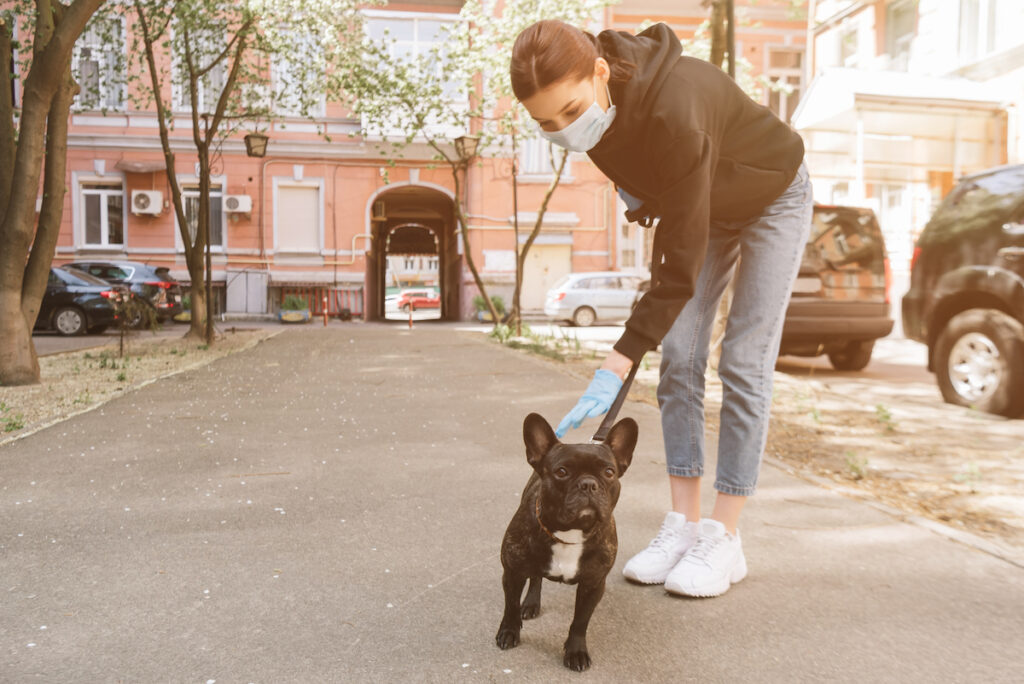If there’s one thing that your new bundle of limitless energy hates more than anything else, it’s being told what to do. Puppies are playful, full of life, and above all else, they’re curious. So the first time you put that lead on, the chances are, they won’t be happy. But if they want to enjoy all that the great outdoors has to offer, then it’s absolutely essential that they learn to walk on a lead.
Unfortunately, what seems like a simple exercise in training can be quite tough depending on your puppy’s personality. But even if you have the most stubborn of pooches, these tips below should help you master the act of walking your puppy on a lead without looking like you’re strangling him or her.
But first things first, let’s talk about collars.
Collars and getting used to wearing one
That first week with your new puppy is a very special time when both you and your puppy get to know each other and form that bond of trust. So while it’s always a good idea to start as soon as possible, you might want to let the little one get used to their new environment before introducing a collar or harness.
That said, don’t leave it too long. As with most things related to puppy training, the sooner, the better.
First and foremost, you want to show your puppy the collar in such a way that they understand it’s a good thing. You might offer a treat when they see it first or give a little hug and some praise. Whatever you do, make it a pleasant and happy experience, but DON’T put it on the first time.

Do this a few times and when you feel it’s about time, try putting it on. Again, this needs to be a happy experience so treats and lots of praise are the order of the day.
Make sure that you remove the collar before your puppy starts to become agitated or tries to pull it off by themselves.
If you do this several times, increasing the length of time your puppy wears the collar each time, before you know it, they won’t even notice it’s on. Remember that your curious little pooch may get their new collar caught on furniture so keep a close eye on them.
Choose your commands
Before we get to the lead, you’ll need to sort out what commands you will use for getting your puppy to come back to you and stop pulling on the lead.
It genuinely doesn’t matter what command you use. It could be ‘here’, ‘heel’, ‘back’ or any other word that tickles your fancy. The most important thing to remember is that you must use the same command at all times and that includes every person in the house who will walk the puppy.
Now it’s time for the lead
And by that we mean that it’s time to introduce the lead in the same way that you did the collar. You’re going to take the same softly, softly approach using treats and lots of praise. It might feel a little slow, but trust us, taking it slowly is by far and away, the best way to train your puppy in anything.
Depending on your puppy’s disposition, you might find yourself struggling to remain in control as they try all they can to get away from the lead. If this happens, it’s important that you try to remain calm and then calm your puppy down. NEVER shout or yell at your puppy as it has been proven to have a negative effect on them. No one likes getting shouted at, least of all a helpless little puppy, so no matter how frustrated you are, don’t do it.

The first time you put the lead on, don’t worry too much about going anywhere. Just walk across the room or around the house if you can manage it. The most important thing you need to remember here is that pulling on the lead is a bad thing. And that works both ways. If you don’t want your puppy to pull you around on the lead, then don’t pull them.
It will be difficult at first, but try to think of the lead as a safety measure to stop them from getting into any danger. Let them explore and wander around and don’t try to control them too much. After all, you’re in the house.
So, you’re probably thinking ‘if I can’t pull the lead, how can I get my puppy to go where I want them to?’ Fair question and the answer is quite simple. It’s all about treats or even a favourite toy.
Use these to lure your puppy closer to you each time the lead goes taut. Eventually, the message will get through that when the lead is stretched too taut, they’re too far from you and need to come back. Ideally, this will teach your puppy that the best place to be at all times when on the lead is right by your side.
Of course, this won’t always be the case in reality as there are so many distractions outside. However, it will work in the long-term if you remain patient and keep up the training for as long as is required.
Venturing outside for the first time
This is the big test and what you have both been working towards all this time — going outside! But once again, it’s a good idea to take it easy.
Start off in a controlled environment like your back garden or a park with very little pedestrian traffic. The idea here is to get used to the idea of walking on a lead without too many distractions for your puppy.
Try to make it a fun exercise so make sure to play a little with your puppy when they are on the lead. This way, they’ll associate the lead with good times and not just treats and walking by your side.
If they are struggling with the lead or are nervous, get a friend or family member to come with you. They can walk on ahead of you and lure your puppy with a toy or treats. It will take some time, but your puppy will get used to it.
Once you’ve mastered a controlled environment, it’s time to head for a dog park or somewhere with more people.
Don’t panic if things don’t go well the first time around. Remember, this is possibly the first time your puppy will meet so many strange people and dogs so they will certainly feel excited or even overwhelmed. Just try to stay patient and keep at it. We’d love to say that’s all there is to it, but we don’t want to oversimplify the whole process! It will be tough and your patience will be tried and tested, but in the long-run, it will be well worth the effort.
